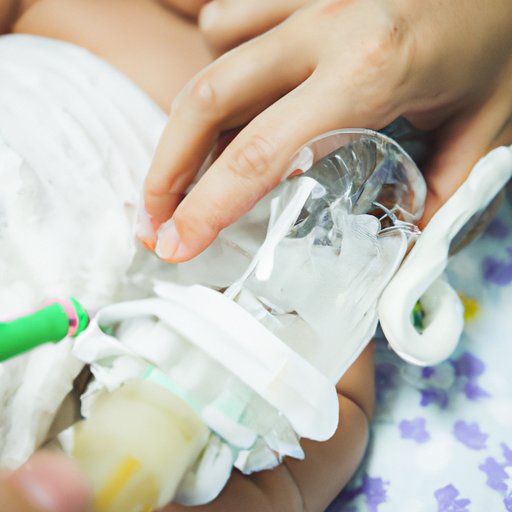Introduction
Your water breaking is one of the most important and memorable moments of your pregnancy. It is the first sign that you are about to give birth. However, it can be difficult to tell if your water has actually broken or not. Knowing how to recognize this event is essential for a safe and healthy delivery. This article will explore the signs and symptoms of water breaking, the difference between urine and amniotic fluid leakage, the timing of water breaking, what to do when your water breaks, potential risks associated with a leaking amniotic sac, and steps to take if your water breaks before reaching the hospital.

Identifying the Signs and Symptoms of Water Breaking
Water breaking is the process by which the amniotic sac ruptures and releases amniotic fluid. Amniotic fluid is a clear, odorless liquid that surrounds and protects the baby while in the uterus. When the amniotic sac breaks, the fluid leaks out through the vagina. This is a sign that labor is beginning and the baby is ready to be born.
Common signs and symptoms of water breaking include a gush or trickle of clear or yellowish liquid from the vagina; feeling a sudden wetness in your underwear; and a sensation of pressure or fullness in the lower abdomen. Other less common signs and symptoms include mild cramping, backache, and feeling the baby move lower in the abdomen.

Explaining the Difference Between Urine and Amniotic Fluid Leakage
It is important to note that there is a difference between urine and amniotic fluid leakage. Urine leakage is usually caused by an overactive bladder, and it tends to have a strong odor. Amniotic fluid, on the other hand, does not have an odor and is usually clear or slightly yellow in color. If you suspect that your water has broken, it is best to consult your healthcare provider right away.
Understanding the Timing of Water Breaking
In most cases, water breaking occurs during the late stages of labor, just before the birth of the baby. However, it is possible for the water to break earlier than expected. This is known as preterm labor. Preterm labor is labor that occurs before 37 weeks of pregnancy. It is important to be aware of the signs of preterm labor, so that you can seek medical attention if necessary.
If your water breaks before you reach the hospital, it is important to seek medical attention immediately. There are certain risks associated with a delayed water break, such as infection, preterm labor, and cord prolapse.

Exploring What to Do When You Suspect Your Water Has Broken
If you think your water has broken, it is important to seek medical attention right away. Your healthcare provider will be able to confirm whether or not your water has broken, and they will also be able to provide advice on what to do next. It is also important to remain in a comfortable position until you arrive at the hospital.
Describing the Potential Risks Associated with a Leaking Amniotic Sac
Having a leaking amniotic sac can lead to a number of potential risks. One of the most serious complications is infection. Infection can occur if bacteria enter the womb through the ruptured membranes. This can potentially cause harm to both the mother and the baby. Other potential risks include preterm labor and cord prolapse.
Outlining Steps to Take if Your Water Breaks Before Reaching the Hospital
If your water breaks before you reach the hospital, there are a few steps you should take. First, contact your healthcare provider right away. They will be able to provide instructions on what to do next. Second, remain in a comfortable position until help arrives. Third, collect the fluid in a clean container if possible. This can help your healthcare provider determine the cause of the leak.
Conclusion
Knowing how to identify the signs and symptoms of water breaking is essential for a safe and healthy delivery. Common signs and symptoms of water breaking include a gush or trickle of clear or yellowish liquid from the vagina, feeling a sudden wetness in your underwear, and a sensation of pressure or fullness in the lower abdomen. It is important to understand the difference between urine and amniotic fluid leakage, as well as the potential risks associated with a leaking amniotic sac. If your water breaks before you reach the hospital, it is important to seek medical attention immediately and remain in a comfortable position until help arrives. For more information, please consult your healthcare provider.
(Note: Is this article not meeting your expectations? Do you have knowledge or insights to share? Unlock new opportunities and expand your reach by joining our authors team. Click Registration to join us and share your expertise with our readers.)
